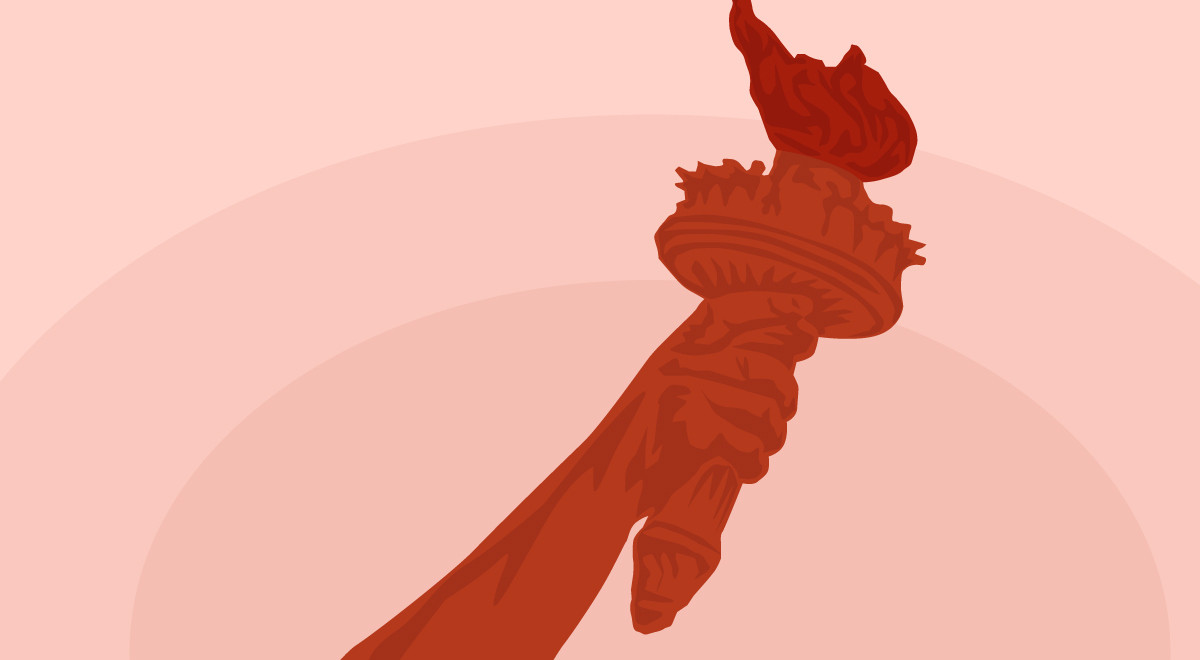Key insights from
The Free World: Art and Thought in the Cold War
By Louis Menand
|

|
|
What you’ll learn
Louis Menand, author of Pulitzer-Prize-winning The Metaphysical Club, is also a professor of English at Harvard and an esteemed essayist and critic. President Barack Obama awarded him the National Humanities Medal. In this book, he highlights how Cold War culture was shaped as he gives glimpses into the lives of cultural icons, bringing to light many of the ironies within the Cold War and dismantling the perceived identities of the artists and thinkers who became big names in the mid-to-late 20th century. Culture in the free world was formed through collaboration and resistance and by people with many different and opposing ideas, but with a shared cause: freedom of expression. Menand artfully portrays how thinkers and artists became the most effective advocates and voices for freedom, despite creating during a time of creative and intellectual repression.
Read on for key insights from The Free World.
|
|
1. There was a Cold War within the free world, too.
The Cold War was not only a cultural conflict between the United States and the Soviet Union, but a cultural conflict within the United States itself. Anyone could fall under scrutiny, but the way out was simple: Be an anti-Communist. Intellectuals and politicians who were once admired became the subject of skepticism and criticism as a result of Cold War paranoia. In the United States—which experienced a surge in patriotic sentiments after the victory of the Allied Powers—a new dichotomy emerged through which people analyzed art, politics, and thought: Communist or anti-Communist. You were either for freedom or against freedom. Freedom, here, essentially meaning American democracy. Those who had nuanced perspectives, or simply different perspectives on freedom, were often criticized for being Communist sympathizers.
George Kennan, perhaps the most influential figure in American foreign policy during the Cold War, had complex political opinions—opinions that seem contradictory when placed within the Communist or anti-Communist dichotomy. Kennan is credited with developing the policy of containment, spearheading the American initiative to prevent the expansion of the Soviet Union and Communism. For Kennan, who identified as a “realist,” the issue of containment was not important because it was an issue of good versus evil; it was important because it promoted American self-interest.
Though Kennan was firmly anti-Communist, he was not pro-democracy. He loathed American democracy and American culture but loved that America encouraged freedom of thought. He deeply admired Russian culture and the resilience of the Russian people, yet he despised Stalinism. He opposed going to war with the Soviet Union while being one of the most prominent voices advocating for Americans to take a clear, strong stance against Communism. He and the foreign policy officers he worked with are responsible for what the Cold War became, and for what it did not become, because of these contradictory, moderate perspectives.
While Kennan’s political perspectives were characterized by complexity, he was known and is remembered for being anti-Communist. The black-and-white thinking that arose from Cold War paranoia worked in favor of Kennan’s reputation. He is remembered as the “Cold Warrior,” an advocate for freedom, despite his disdain for democracy—the very system that American anti-Communists longed to protect and promote. To America, what mattered was that he was anti-Communist. Kennan’s intentions for the Cold War were misunderstood, as Cold War America began looking inward and creating internal division. The House Committee on Un-American Activities became increasingly aggressive in repressing the expression of Communist and leftist sentiments. Intellectual freedom in America—as policy—suffered. Underground, it continued to inspire new elements of culture.
|
|
Sponsored by Noom
You Can Take Back Control Of Your Health

Summer’s around the corner, and that means it’s time to get moving on your health goals. Noom is designed to help you hit your goals at a pace that works for you. Learn to forgive, practice, and (finally) find a routine that works for your lifestyle.
|
|
2. The concept of freedom became a global fascination after World War II.
After 1945, freedom was considered more important than ever before. Apolitical people became politically involved. After witnessing the effects of totalitarianism in Italy, Germany, Russia, and Japan, people who had never contemplated the meaning of freedom became increasingly interested in the subject, leading to the rise of new philosophies and creating an audience especially receptive to literature about freedom. As everyone was thinking about freedom in the 20th century, they were fixated, too, on the looming threat of totalitarianism. Totalitarianism became especially fascinating and frightening to freedom-fixated thinkers because it was unique to the 20th century, and because it appeared that it could take root anywhere. It wasn’t the result of specific cultural conditions but seemed to be a result of modernization. Arendt argues that because those living in modern societies often took freedom for granted and because collective feelings of loneliness were on the rise in modernized nations, the people in these nations were particularly susceptible to the allure of totalitarian rulers. The idea that modern nations were all potentially at risk of falling prey to totalitarianism put a large number of nations on edge, fearing they could be next.
The consequence of believing totalitarianism could become a reality in any country was widespread fear and paranoia. 1984 by George Orwell—one of the most widely read books of the century—suggests that totalitarianism is a threat everywhere if people living in modern nations are not vigilant in resisting it. The novel succeeded in encouraging readers to be vigilant through its portrayal of what life could look like under a totalitarian regime. Literature on totalitarianism was exceptionally popular during the Cold War, and the masses used books like 1984 to gauge the security of their democratic nations.
Much like the political literature of the time, the newly popularized philosophy of Existentialism encouraged people to look inward and to take action—and most importantly, to act freely. Thinkers like Sartre and Beauvoir embraced the already-developed philosophy and furthered it through their works in which they connected the philosophy with their present reality in Nazi-occupied France. Existentialism was appealing because it contradicted nihilism during a time when people longed to have a sense of control and responsibility. To those in the 20th century, existentialism was a philosophy of resistance, stating that so long as a person acts freely—meaning that a person is truly considering what he or she wants to do—that person is resisting being controlled by his or her circumstances.
This was encouraging to both the person living in a free nation and the person living in a totalitarian nation. For the person living in the free nation, like those that Orwell targeted as he wrote 1984, to act thoughtfully and freely was a step toward resisting totalitarianism because it was a small act of embracing freedom rather than mindlessly and willingly surrendering it. For the person living under totalitarian rule, to act freely was an act of resistance because acting—and thinking—freely were the very things their dictators sought to take away.
In On the Origins of Totalitarianism, Hannah Arendt suggests that totalitarian governments differed from the dictatorships of the past in that power was the ultimate goal rather than a method through which to reach certain goals. The goal of totalitarianism was to dehumanize and to control. Existentialism presented a way to retake control, to reclaim a person’s humanity.
|
|
3. American art finally earned international acclaim.
While American art was admired within the United States, European art remained the standard of excellence and the heart of the avant-garde. American art was finally regarded as serious art when American artists stopped imitating European styles and started inventing their own. They were no longer influenced but influential, simply because they began experimenting. American literature exploded in Europe when it was first translated into French, and the French developed their own interpretations of American works, thus adding new depth. Authors like Ernest Hemingway, William Carlos Williams, and William Faulkner made American literature modern through their experimentations with style, voice, and perception of time. They distanced their characters and their writing from any specific morality; they did not explain or give clarity. Critics were not focused on content and plot, but on form and style.
Visual art followed a similar path. It no longer mattered that art was beautiful but rather that it pushed boundaries. Much like 20th century literature, modernist art wished to separate itself from ideology, as many identified a dangerous link between ideology and politics after the Second World War. Despite trying to avoid over-interpretation and association with a specific set of ideas, Modern American art, specifically Abstract Expressionism, was quickly understood by the masses as an expression of freedom and individuality. Its meaning was derived from and understood through the process of its creation. Art became centered on the action that brought it into being, because action was associated with freedom. The artist was equally as important as his or her piece of art because they were the instrument that created it—they were the action. Abstract Expressionist artists, like Jackson Pollock—who was, ironically, involved with Communist organizations—unknowingly promoted American ideals, as the process through which they created their art was novel. The novelty of his method symbolized to Americans an expression of freedom—artistic freedom. Because they resisted convention, modern art and literature became tools for the anti-Communists to promote their personal political ideologies, as the artists understood and explained their works as products of freedom.
|
|
|
|
4. In seeking to obliterate Communist threats, the American government embraced and utilized the restriction of freedom.
The American crusade against Communism, for which Senator McCarthy became infamous, was waged not only against Communist nations but against perceived threats to liberty within the United States itself. Government officials in the United States restricted and condemned expressions of Communist and leftist thought for reasons similar in some ways to those given by Communist governments to justify their own restrictions of freedom of expression: Because such expression was a threat to their political agendas. While the United States had long been a haven for freedom of thought, during this period, many were stripped of their platforms because of their perceived political opinions.
Government officials were not the only citizens who suffered the consequences of McCarthyist paranoia, and one certainly did not have to be a Communist to become subject to suspicion. Hundreds of professors lost their jobs because of their ideas. What was intended to be a crusade for freedom was instead characterized by government overreach in personal affairs. The Cold War within the United States decreased many citizens’ trust in the government as politicians violated their own values. Others praised the government for its aggressive efforts to quash Communist sympathies. It was a period saturated with irony. While the American government was terrified of threats to freedom, they simultaneously restricted the freedoms of people they disagreed with.
|
|
5. People in free countries felt a deep sense of responsibility to liberate those under Communism.
Despite most nations finally rejecting imperialism and colonization, western nations maintained involvement in other nations’ political affairs. It became an American mission to create democracies, and most Americans believed that all cultures would benefit under democracies. As the new world superpower and a victor of World War II, the United States soon saw itself as a savior and liberator for those under Communism. This was simultaneously a well-intentioned and self-serving mission.
American politicians genuinely believed that promoting democracy across the world had everyone’s best interest in mind. They also believed this would boost their reputation among Americans and prevent future threats to their own democracy. Moral language was used to describe the mission of spreading democracy, framing US intervention as a matter of right and wrong. But those who shaped Cold War foreign policy believed that this mission was motivated by self-interest and self-preservation more than by a sense of moral obligation. The Vietnam War is the most memorable example of American intervention in Communist expansion, and it created a massive divide among Americans, leading many to reconsider their thoughts on the extent to which America should battle Communism. It was a turning point for politics and popular culture.
|
|
6. The 20th century fostered cultural transformation.
After World War II, it seemed as if every aspect of culture was on its way to becoming new. Art, literature, music, race relations, foreign affairs, and the role of religion in society were all quickly on their way toward dramatic change. Youth culture, especially, took a leading role in shifting the 20th century.
It was a time of collaboration among those who were involved in cultural activities. Writers and artists who have become household names and historical figures fed off each others’ works. Most of the thinkers and artists whom we consider original, or avant-garde–Allen Ginsberg and the Beats, Pollock and the Abstract Expressions, Faulkner, Williams–were all inspired by others, adding small adjustments to make their crafts their own. This added depth to the culture, as ideas were reshaped, refined, and sometimes resisted. Higher education enrollment skyrocketed, and universities were often the launching pads for successful writers and artists, as professors played a significant role in shaping student thought.
Racial dynamics in America, too, began changing as Nazi Germany carried out its own appalling and brazen campaign of racism, on a scale never witnessed before. In America, black culture thrived despite segregation, influencing mainstream culture and inventing genres of music that would later become commercialized and appropriated by white musicians in the 1950s and 1960s. Rhythm and blues became rock and roll, and rock and roll eventually evolved from being seen as youth entertainment to being considered a serious form of art, worthy of criticism. Because rock music was art, it lasted longer than the usual musical fad. The progression of rock and roll as a genre can be interpreted as a collaborative effort between Europe and the United States. While the United States saw the birth of rock and roll, the music industry marketed the music to European audiences as well as domestic ones, inspiring the creation of bands like the Beatles and the Rolling Stones—two of the bands credited with turning rock music into an art form. Though the United States takes credit for the invention and explosion of rock music, the genre owes its success and longevity to European artists.
Young people in the Cold War were especially fascinated with music, which they felt was their own. It was created by others their same age, during the same period of their youth. Experimentation in music was another way of embracing freedom, as was using music to advocate for the social change they wished to see. A counterculture began during the Cold War as the youth were unhappy with the cultural norms and standards of the time, and the movement was certainly met with resistance from older generations. Many of the counterculture icons who are remembered today are misunderstood as they are interpreted through the lens of our present, and as they were misrepresented even in the height of their fame. Misinterpreting cultural works was one of the most notable themes of the Cold War era. Because thought was so drastically skewed by the Communist or anti-Communist dichotomy, people struggled to interpret art outside of the context of the Cold War. This trend of misunderstanding, however, played a crucial role in defining Cold War culture; by over-simplifying ideas, the meaning of those misunderstood works became more potent, and those artists and thinkers became icons.
Despite being “countercultural,” much like most Americans and westerners, these young people, too, held freedom as their highest value. Their resistance against mainstream culture further supported the idea that freedom was important–regardless of whether they were leftists or passionate anti-Communists–because their resistance was to embrace their freedom of expression. Culture changed so drastically during the Cold War because so many people had freedom on their minds in differing and conflicting ways. While striving to promote freedom abroad, activists and politicians repressed freedom within the States. Even in these stifling conditions, art and thought flourished as they became instruments in the hands of both critics and supporters—the instruments to which advocates for freedom owed their ideological victories as the Cold War came to a close.
|
|
Endnotes
These insights are just an introduction. If you're ready to dive deeper, pick up a copy of The Free World here. And since we get a commission on every sale, your purchase will help keep this newsletter free.
* This is sponsored content
|
|
This newsletter is powered by Thinkr, a smart reading app for the busy-but-curious. For full access to hundreds of titles — including audio — go premium and download the app today.

|
|
Was this email forwarded to you? Sign up here.
Want to advertise with us? Click
here.
|
Copyright © 2025 Veritas Publishing, LLC. All rights reserved.
311 W Indiantown Rd, Suite 200, Jupiter, FL 33458
|
|
|